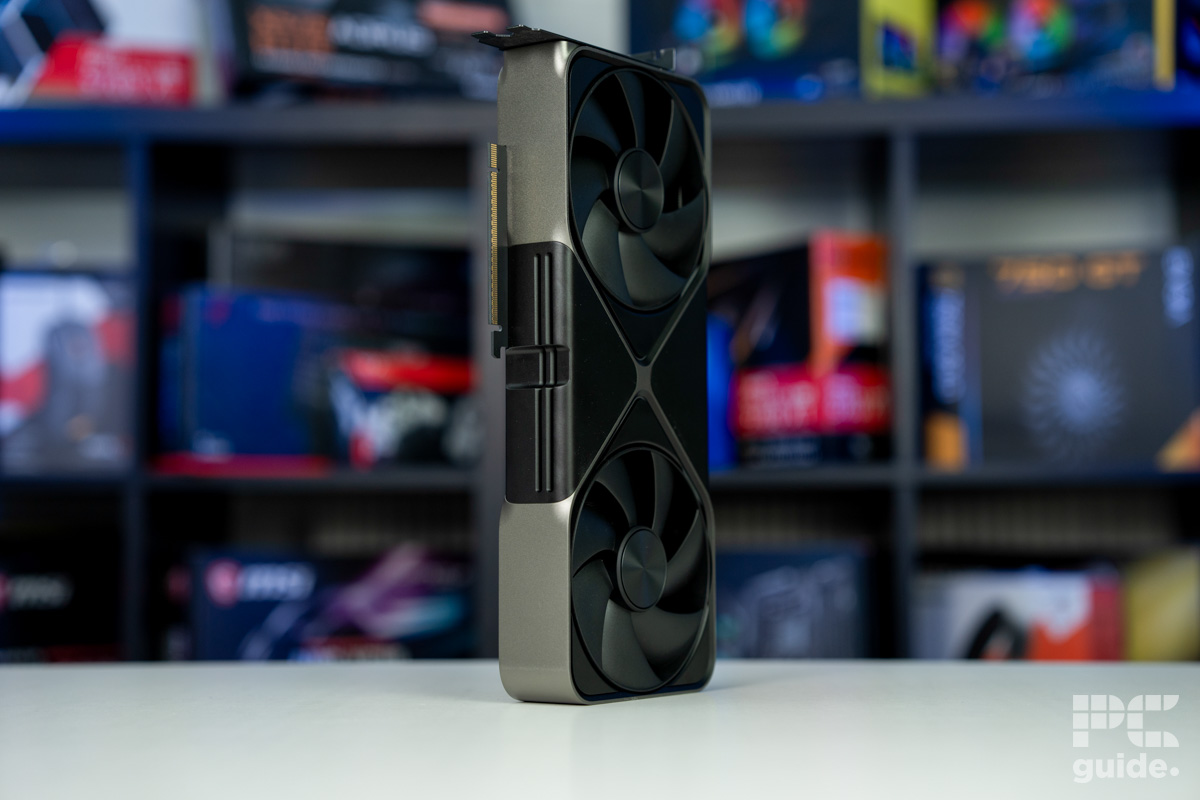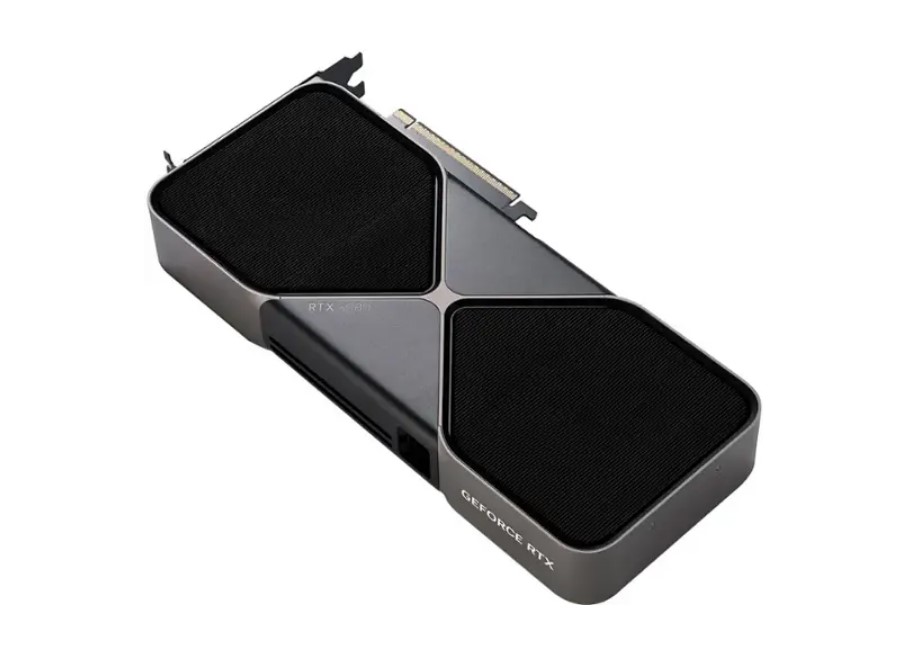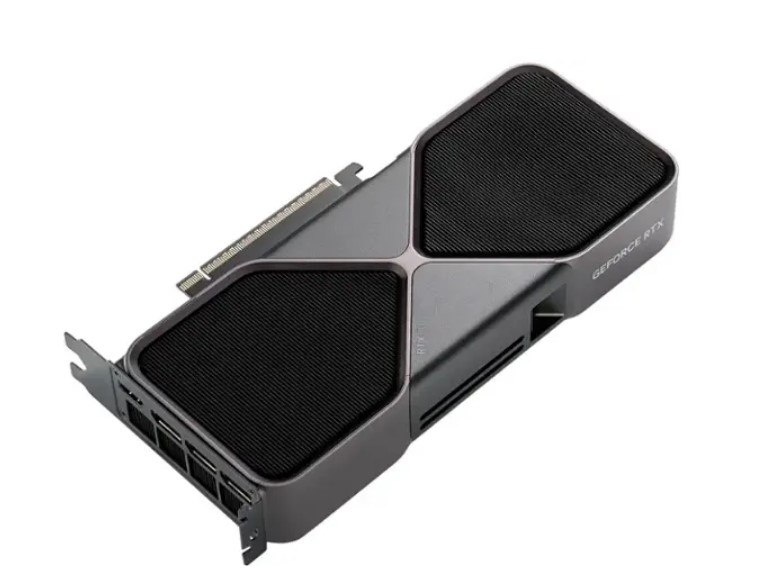RTX 5070 Ti vs RTX 5090 comparison – how do they differ?

Table of Contents
The RTX 5070 Ti is finally here and the reviews are in, and they’ve been…well, mixed to say the least. That’s not so much due to its performance, which has generally been seen as a solid step up from the previous generation and closer than we thought against the 5080, but rather to do with the pricing. In short, it’s been very difficult to find one at MSRP, which essentially changes everything when it comes to deciding whether to go for it or not. Add that to stock issues (yet again) and you can see where things get challenging.
Compared to the 5090, sure, we know it’s not going to be as powerful, but the question is how wide is the gulf between the two? With DLSS 4 and Multi Frame Gen, do you even need to hold out for a 5090?
We’ve compared both cards side by side using available benchmarks from a variety of reviews, as we too have found it difficult to get our hands on the 5070 Ti and 5090. We will be updating this page with more insight once we do, but for now, this should help give you an overview of the differences between the two cards, and which one may be your best bet considering the actual circumstances of their respective releases.
RTX 5070 Ti vs RTX 5090 specs comparison
Here’s a quick comparison of what the two cards bring to the table and what exactly they have to offer in terms of specs. Giving us an insight into the base differences that make them the GPUs they are. As you can expect, there’s quite a big chasm between the two, so we’ll go over what these mean for the cards and how they affect them.
| Specifications | RTX 5070 Ti | RTX 5090 |
|---|---|---|
| Cores | 8,960 | 21,760 |
| Base clock speed | 2.3 GHz | 2.01 GHz |
| Boost clock speed | 2.45 GHZ | 2.41 GHz |
| Memory | 16GB GDDR7 | 32GB GDDR7 |
| Memory interface | 256-bit | 512-bit |
| Bandwidth | 896 GB/sec | 1,790 GB/sec |
| TGP | 300W | 575W |
| Power connector | 2x PCIe 8-pin cables or 300 W or greater PCIe Gen 5 cable | 4x PCIe 8-pin cables or 600 W PCIe Gen 5 cable |
| Release date | 20th February 2025 | 30th January 2025 |
Performance
When looking for the performance difference between the two cards, we have the ability to check plenty of reviews out there for the two cards. Since we have yet to get our own testing done, we can see how the two compare in the many other publications out there to give you an understanding of what each card can achieve.
RTX 5070 Ti vs RTX 5090 4k performance
Sporting a 4K monitor is no easy task for the highest-resolution displays. With the graphics card creating over eight million pixels, it takes quite a lot of processing power to do it. That’s where the 5090’s incredibly fast and high-capacity VRAM, along with the bandwidth and cores onboard, will be able to take advantage and get the most out of it. So here’s how that translates into actual performance.
Looking at Cyberpunk 2077, one of the more demanding games out there with incredible graphics and plenty of settings and features to change and utilize, it has a bit of impact on your GPU. In various benchmarks, we’ve seen the 5070 Ti average a solid 60FPS performance at the resolution, while the RTX 5090 shoots ahead with an astounding 108. Leading to a 48FPS advantage, equal to 44%.
Counter-Strike 2 is a competitive first-person shooter, so you can expect quite a high-performance level, even at the high resolution. In this scenario, the RTX 5070 Ti gets a whopping 193 average FPS, but that’s nothing on what the 5090 is capable of as it smashes straight to 355 FPS. That results in a 162FPS lead that translates to a 46% improvement compared to the 5070 Ti.
For another graphically demanding game, we see how the two perform in Stalker 2. At 4K in the benchmarks, the 5070 Ti does struggle to get what we’d consider a playable 60, as it averages 51 FPS instead. Not even the 5090 runs that far ahead as it gains around 37%, or 30FPS, as it averages at 81.
It’s quite clear that the RTX 5090 is the one to go for if you’re after a 4K performance. The extra memory and cores give it a great advantage; it is a roughly 43% lead at 4K in general. Although the 5070 Ti holds up on its own, it also has the ability to use DLSS 4 to get more out of it. So you will able to boost it to a higher and improved framerate.
RTX 5070 Ti vs RTX 5090 1440p performance
Knocking down the resolution to where the 5070 Ti might be more comfortable and where Nvidia places it, the 1440p benchmarks might give it more of a fighting chance. Even if it does well in terms of performance in 4K, 1440p is more of a sweet spot that a lot more gamers use, as Steam’s hardware survey showcases.
That drop in pixel count results in quite the improvement in framerates, as the RTX 5070 Ti more than doubles its average FPS in Cyberpunk 2077. Now capable of getting 125FPS, the RTX 5090, in turn, moves up to an average of 207FPS. That closes the gap to an 82FPS and 40% lead for the flagship graphics card.
Looking at the more competitive shooter CS2 at 1440p, the disparity between the two starts to drop, not too much but gives the 5070 Ti a great framerate for high refresh rate monitors. It manages to average 361FPS while the 5090 ramps up to 590FPS, giving it a 229FPS and 39% average over the 5070 Ti model.
Then, in Stalker 2, the 5070 Ti does close the gap to the 5090, as it achieves an average 83FPS compared to the 118 of the flagship card. That is a difference of 35FPS or 30% between the two graphics cards. More generally, over the various reviews at 1440p, the RTX 5070 Ti falls behind the RTX 5090 by around 35%. That does give it a good ability to get some fast and playable framerates, though.
RTX 5070 Ti vs RTX 5090 synthetic performance
Moving away from just gaming capabilities, there are plenty of other kinds of work that your graphics cards can do across the board. Be it rendering out 3D models and scenes, encoding and decoding videos, or even what plenty of the high-end cards go towards doing in working on AI models.
In that case, we compare the two benchmarks. One of them is the MLPerf test suite, which generates AI text from various inputs. Here, the RTX 5090 achieves 246.76 tokens per second compared to the 145.82 that the RTX 5070 Ti is capable of, which is 40% lower than the flagship model’s AI performance.
Next up, we see how they stack up in Blender, the benchmark that provides insight into how the two do in 3D computer graphics and creating some impressive scenes. Here, the RTX 5090 achieves a score of 4759.5 compared to the RTX 5070 Ti’s 2433.5, giving the 5090 a lead of 49% compared to the 5070 Ti.
Design differences
Cores
When it comes to the variation in specifications between the two, we start by looking at the die differences. As the CUDA cores inside give it all that processing power at its heart. So it’s no surprise to see the RTX 5090 has a great lead over the 5070 Ti with what it has to offer inside. It has a count of 21,760 over the 8,960 in the 70 Ti, a 59% lead in the basic setup between the two cards.
That can account for the great advantage it has over the lower-tiered model, but of course, it’s not a one-to-one scaling but is a good indicator considering the many other factors affecting it. Another one of which is the clock rate of these cores, how fast they do the processing, and between the two, the boost clock is very much the same as the 5070 Ti just takes a lead of 45MHz.
Those speeds are for the Nvidia set factory clocks, and you can expect to see a lot more custom cards offering a higher clock rate. With the overclocked modes that push the performance ever so slightly more that might be a bit more appealing of an option when picking out your model.
Memory
One of the other big differences between the two cards is the VRAM, how much memory is onboard, and the speed they achieve. The part that loads up all the textures and information for the chip to process is a big factor in getting the most out of your higher resolutions. Very much like the RAM to your CPU, the bigger and faster, the better for the processor to do its job.
The RTX 5090 offers a massive 32GB of GDDR7 and is clocked at 28Gbps, resulting in a total bandwidth of 1.79TB/s. Whereas the 5070 Ti halves the capacity down to 16GB of the same type, resulting in the same clock rate, it also cuts down the memory bus to 256-bit. All of that combined results in a 50% drop in bandwidth compared to the flagship model.
TGP
Lastly, we check the total graphics power of the cards and how much electricity they require to run. As you might expect, all the extra specs of the 5090 ramp up its power needs—all the way up to 575W compared to the 300W of the 5070 Ti, giving it a huge 275W increase in power requirement.
Of course, the power supply requirements differ greatly between the two. If you opt for the flagship card, you’re looking at a 1000W system power compared to the more modest 750W needed by the 5070 Ti. You also have to consider the rest of the system’s cooling and the space each model will take up, as the bigger power requires greater cooling, creating a more massive card.
Price and avaialability
Now, in the current market, we’ll first look at what the cards are meant to cost and the value they offer. The RTX 5090 has an MSRP of a staggering $1,999, compared to the 5070 Ti’s more tame $749. That’s still a significant amount, but definitely better than the $1,250 the 5090 demands on top. You could, in fact, buy two Tis before reaching the price of the 5090 and a great CPU on top, too.
That is if you can find either of them for that price or in stock. As the flagship flew off the shelves, models quickly rose in price for example, ASUS started selling a 5090 model for $3,099. Even the RTX 5070 Ti shared a similar fate and sold out within minutes of the launch, so even if you wanted to grab one, you’re going to wait around for some time.
Nvidia is trying to resolve some of the situation with its reintroduction of the Priority Access program, but that is just for the Founder’s Edition models, which the 5070 Ti model doesn’t offer. Instead, you might just have to sign up for lists and try to snatch one up before it goes. Just don’t overpay for it, as the price is the deciding factor for the 5070 Ti, according to reviews.
There is some hope you might be able to get them for MSRP, as Newegg listings show them at 5070 Ti. Compared to the 5090 model that is listed for $1,999, we’ll be interested to see if those ever come into stock anyway.
Verdict
Overall, the RTX 5090 is clearly well ahead of the RTX 5070 Ti across the board in performance. Majorly so in 4K resolution, rendering, and AI performance thanks to all its higher specs and, specifically, the VRAM it has to offer. That doesn’t mean you shouldn’t discount the 5070 Ti, considering it costs a lot less, well under $800, compared to the $2,000 5090; it’s going to fit a lot more budgets.
It is especially impressive because it is capable of 4K gaming, and more so at 1440p, where it closes the gap to the 5090. Along with having all the features and improvements the 90 series card has since it’s on the same Blackwell generation, there’s plenty for you to utilize. If it’s DLSS 4 with multi-frame gen, access to Reflex 2 when it comes out, and the improved NVENC encoders it has plenty to offer at the lower price point.


